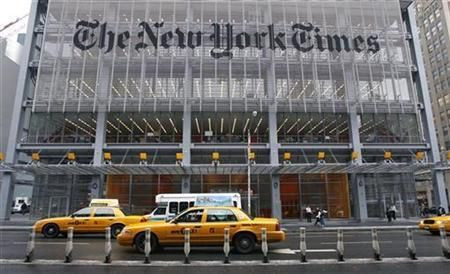NYT, WSJ Paywalls Come Down For Election Night

The New York Times and the Wall Street Journal are temporarily lifting their paywalls to provide access to breaking coverage of the U.S. presidential election.
Starting at 5 p.m. ET on Tuesday and ending at 5 p.m. ET on Wednesday, all Wall Street Journal content will be freely available to website visitors and via the paper's mobile applications. The New York Times will offer 24 hours of free digital access starting at 6 p.m. Tuesday, according to a press release.
This is the third time the New York Times has lifted the paywall since it was implemented in March 2011, coming shortly on the heels of an extended open-access period during Hurricane Sandy and its immediate aftermath. That five-day period of free access was the longest yet.
“We take down the pay gate during times when in our judgment it is necessary to pass along critical information (for instance, Hurricane Sandy) or during major news events (like presidential elections),” Times spokeswoman Eileen Murphy told Poynter. The decision, Murphy said, “is always a collaborative one between the newsroom and the business side.”
The Times also rolled back the paywall in August 2011 to keep readers up-to-date on Hurricane Irene.
Normally, visitors to the Times' website can only access 10 articles per month before the paywall pops up. The Wall Street Journal does not have a set limit for article viewing, but picks and chooses what content to put behind the paywall.
The Journal was one of the first news organizations to implement a paywall, in 1997, which made it an exception to the general rule for more than a decade.
Between 2005 and 2007, the Times did experiment with a paid content model called TimesSelect, where readers paid $49.95 per year to access popular opinion columnists and the newspaper's archives. But at Times-commissioned study found that restricting access to the site wasn't the best decision, and the program was ended.
Economic troubles came with the recession of 2008, forcing the Grey Lady to confront the issue of online paywalls again. When the Times eventually enacted its own version of a paywall, a host of news organizations large and small followed suit.
One of the key features incorporated into the Times' paywall is the ability to quickly remove or adjust it, as chairman and publisher Arthur Sulzberger Jr. explained to a reporter in March 2011.
“Let’s imagine there’s a horrifying story like 9/11 again,” Sulzberger told the Times. “We can -- with one hit of a button -- turn that meter to zero to allow everyone to read everything they want. We’re going to learn. We built a system that is flexible.”
It's unclear whether either the Times or the Journal will put the paywalls back up or keep them down if the election drags on to a recount.
While there's election coverage available through a host of other news organizations and social media, the paywall lifting will allow many die-hard political junkies to spend tonight glued to their laptops and smartphones, waiting to see if Times blogger and statistician Nate Silver's forecast of an Obama win came true.
© Copyright IBTimes 2024. All rights reserved.





















